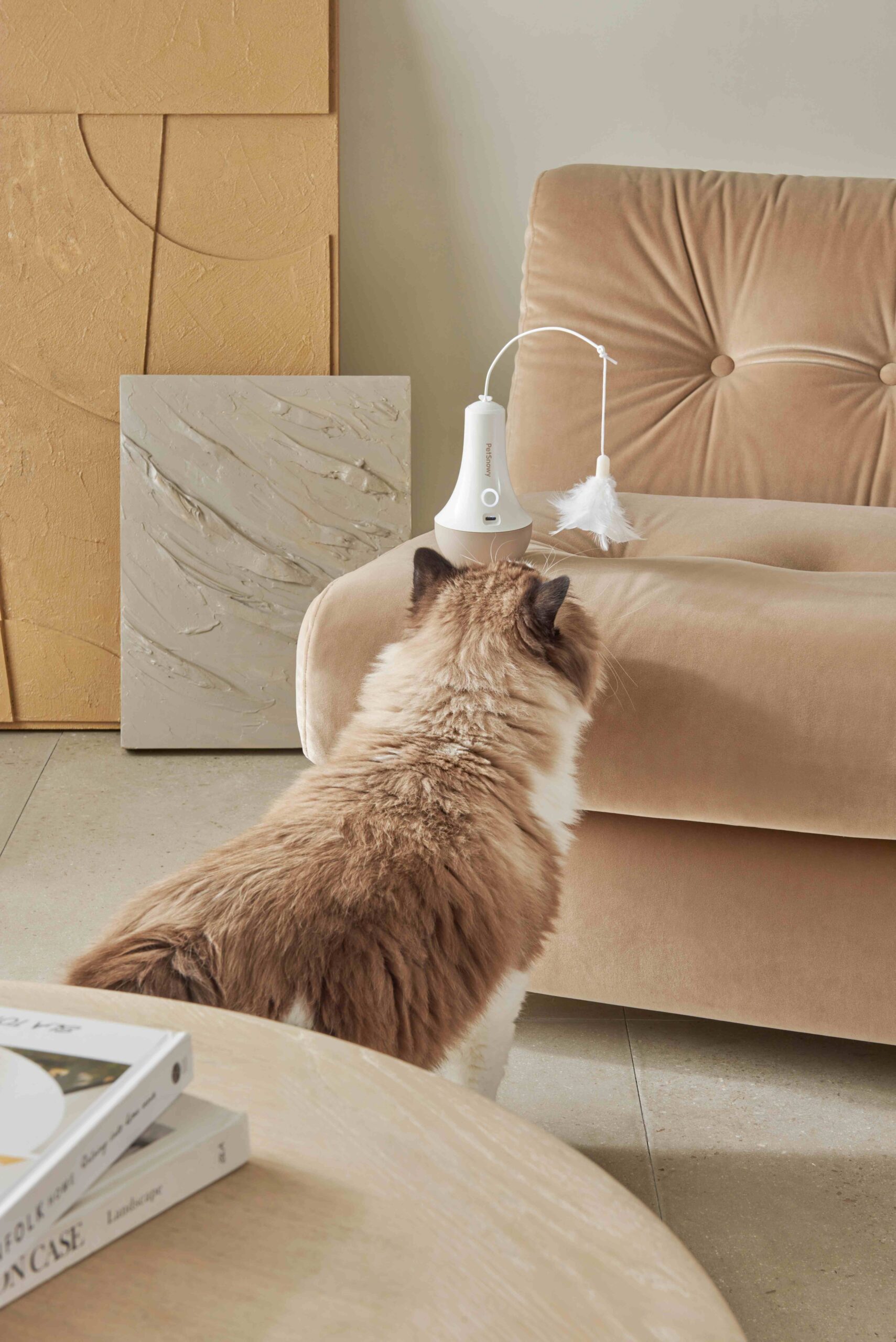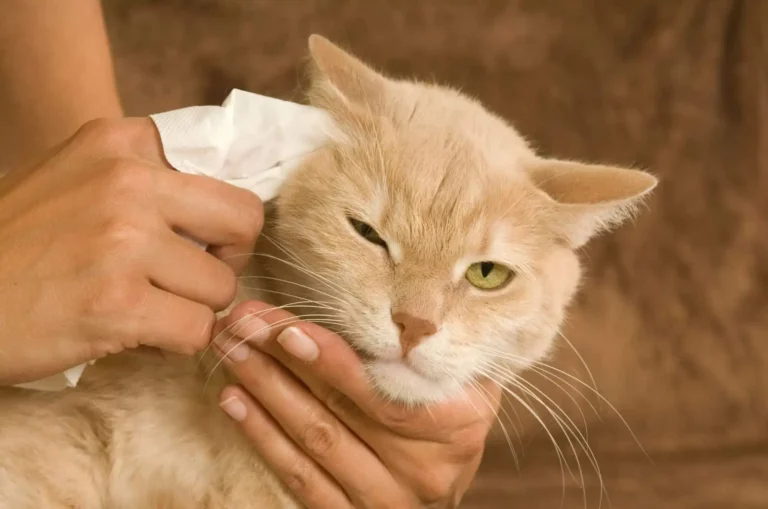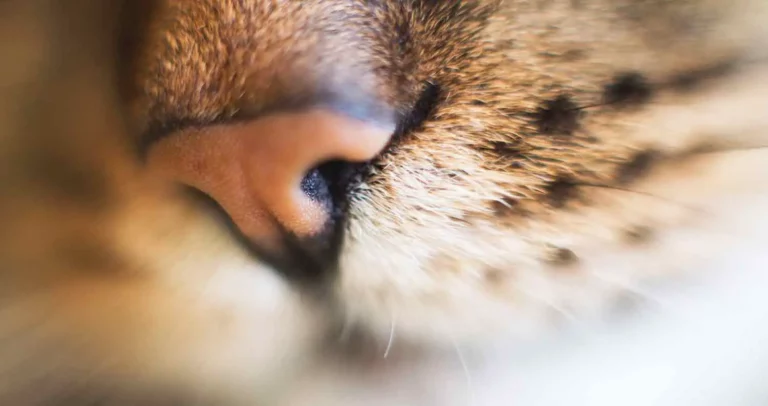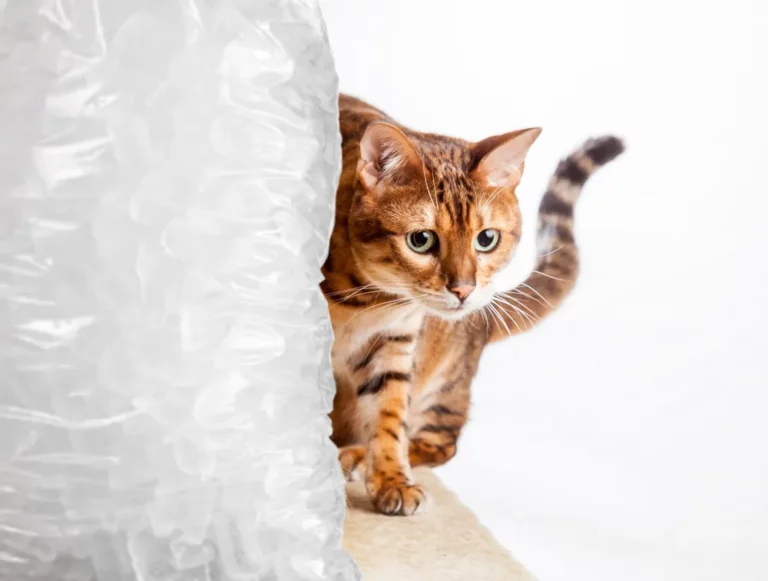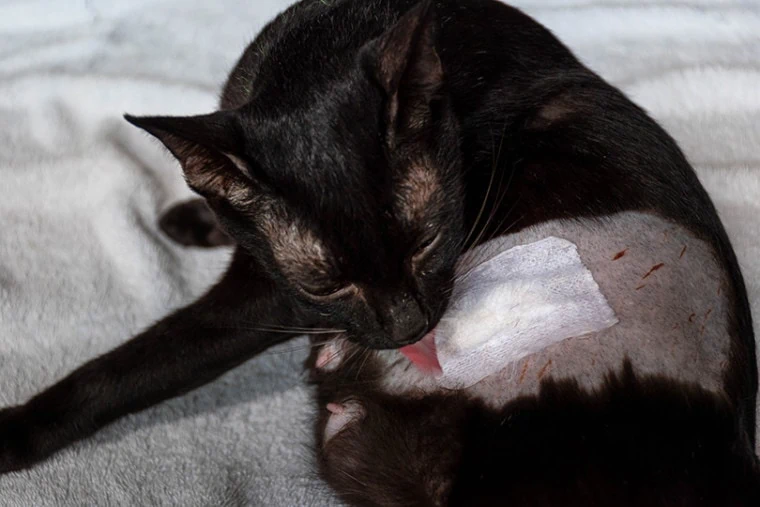Protecting Leather Furniture From Cats: Tips & Tricks
Welcome to our comprehensive guide on protecting leather furniture from cats. When you’ve got a feline friend who loves to scratch, it’s critical to know how to shield your valuable pieces.
Throughout this guide, we’ll delve deeper into these strategies, providing practical advice on each aspect. Let’s jump right into it!
Key takeaways
Understanding Cats: Comprehend your cat’s instinctive behavior for effective prevention strategies.
Alternatives Matter: Scratch posts and other distractions can save your furniture from feline follies.
Deterrents Are Your Friends: Use deterrents like sprays, tapes, and covers to keep cats away from the furniture.
Maintenance Is Crucial: Regular cleaning and conditioning of your furniture can ensure its longevity.
Short Answer: The key to defending your leather furniture lies in understanding cat behavior, providing enticing alternatives like scratch posts, using deterrents, and conducting regular furniture maintenance.
Why Cats Scratch Furniture?
Before we dive into how to protect your leather furniture from cats, it’s crucial to understand why cats scratch in the first place. Scratching is an instinctual behavior that serves a variety of purposes for our feline friends.
Firstly, cats scratch to sharpen their claws. Their claws grow in layers, and scratching helps remove the old, outer layers to expose the sharper, new claws underneath.
Secondly, cats also scratch to mark their territory. They have scent glands in their paws that release pheromones when they scratch, leaving an invisible mark that says, “This is my spot!”
Lastly, scratching is a form of exercise and stress relief for cats. It allows them to stretch their bodies and work off energy.
So, contrary to popular belief, cats aren’t scratching your furniture out of spite or mischief. It’s just their natural behavior. However, this doesn’t mean you should allow your leather furniture to become a casualty of their natural instincts. As cat owners, we need to find a balance between respecting their natural behaviors and maintaining our homes.
By understanding these behaviors, we can approach the problem more effectively and find ways to satisfy their scratching instincts without sacrificing our leather furniture. The next step is providing suitable alternatives to your couch—let’s explore that next.
Scratch Posts and Toys to Protect Leather Furniture From Cats
An effective strategy for protecting your leather furniture from cats is to provide them with engaging alternatives that cater to their scratching instincts.
One such alternative is a scratching post. When selecting a scratching post, consider the material, size, and placement. Cats usually prefer rough surfaces that they can shred to pieces, hence posts covered in sisal fabric or rope are often a hit. The post should be tall enough for your cat to stretch fully—this makes it more appealing. As for placement, keep the post near the furniture your cat usually targets. This way, it’s easier to redirect their scratching to the post.
It’s also essential to train your cat to use the scratching post. You can do this by making the post more enticing. Sprinkle some catnip, attach a toy, or even scratch the post yourself to pique their interest. Consistency and patience are key here.
In addition to a scratching post, interactive toys can be an excellent way to distract your cat from the furniture. Ball and track toys, puzzle feeders, and laser pointers can keep your cat engaged and physically active, reducing their urge to scratch.
By providing alternatives, you allow your cat to indulge their natural instincts without harming your leather furniture. This method respects their needs and saves your couch at the same time—a win-win situation! Up next, we’ll delve into the world of deterrents that can discourage your cats from targeting your furniture.
No products found.
Sprays, Tapes, and The Unconventional for Protecting Leather Furniture From Cats
Once you’ve set up alternatives for your cats, the next step in protecting your leather furniture involves employing deterrents to discourage scratching. Deterrents work by making your furniture less appealing to your cat.
Cat repellents come in handy here. These are sprays with scents that cats find unattractive. They’re safe for your furniture and don’t usually leave any residue. Before you purchase, look for reviews or ask your vet for recommendations to find the most effective one.
Another deterrent is double-sided tape. Cats dislike the sticky feeling on their paws. Apply the tape on areas your cat often scratches. They’ll quickly associate the unpleasant sensation with the furniture and look elsewhere to satisfy their scratching needs.
Lastly, don’t disregard the power of unconventional deterrents like aluminum foil or plastic mats. Cover the scratching areas with these materials—cats detest the noise and texture, which deters them from scratching.
It’s important to note that deterrents should be used in combination with alternatives like scratching posts. By doing this, you’re not just discouraging them from scratching the furniture, but also guiding them towards appropriate outlets for their instincts.
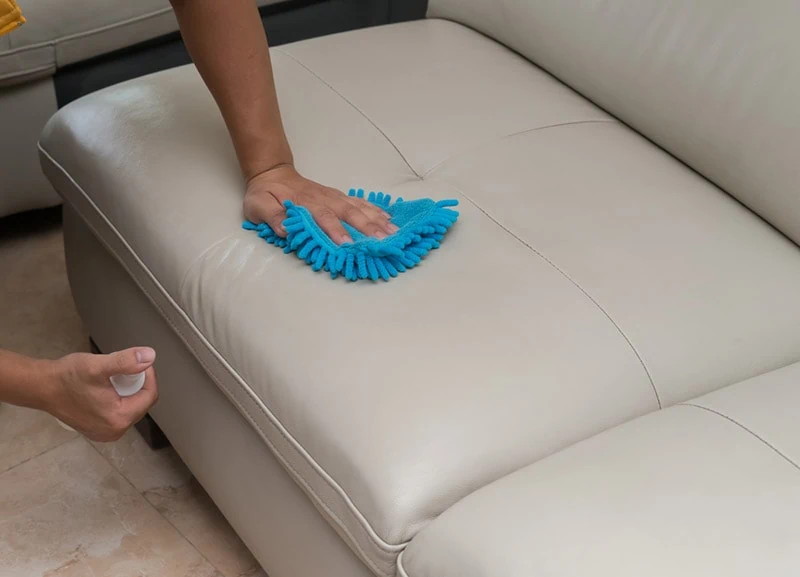
Leather Furniture Protectors and Scratch Guards
Even with alternatives and deterrents in place, an extra layer of protection can go a long way in safeguarding your leather furniture from cats. This is where furniture protectors and scratch guards come into play.
Leather furniture protectors are specially designed covers that protect your furniture from scratches, spills, and wear and tear. They come in a variety of designs to match your decor and are easy to clean. Look for protectors that are durable and snugly fit your furniture. They not only shield your furniture but also extend its life.
Another effective preventive measure is installing scratch guards on your furniture. These are transparent sheets that can be attached to the sides of your furniture. They serve as a physical barrier between your cat’s claws and the furniture. There are various options available, but the key is to find one that is easy to install and remove without damaging your furniture.
A special mention here for an innovative solution—”Leather Scratch Guard“. This guard is a durable self-adhesive film that provides a strong protective layer over your furniture. Its transparent nature ensures that it blends seamlessly with your leather furniture.
By adding a physical barrier to your furniture, you can ensure that even the most persistent cat scratches don’t reach the precious leather underneath.
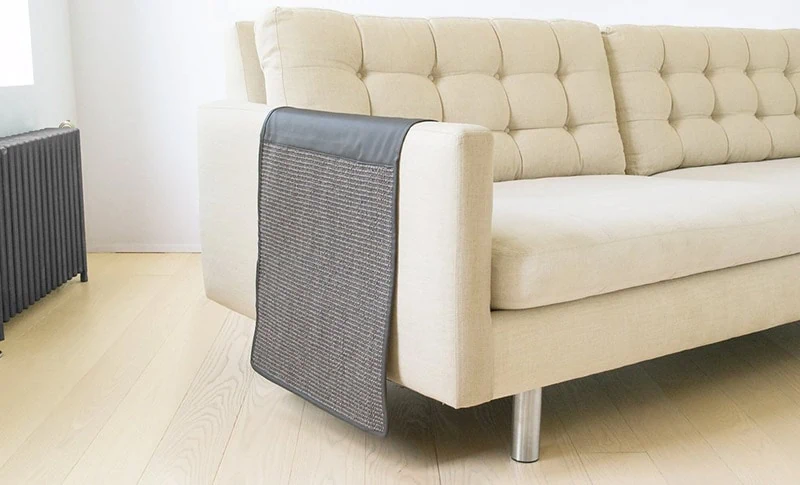
Cat-Proofing Your Leather Furniture
Alongside the steps outlined in this guide, there are a few more insights for protecting your leather furniture from cats that can make your efforts more effective.
- Use Vinegar as a Deterrent: Cats dislike the strong smell of vinegar. A homemade repellent of equal parts vinegar and water can be sprayed around (not directly on) your leather furniture to deter your cat. Always test a small, hidden area first to ensure it doesn’t discolor the leather.
- Soft Paws: Soft Paws are vinyl nail caps that you can glue to your cat’s claws. They’re safe, affordable, and most importantly, they prevent your cat from causing any damage when they scratch. They come in different sizes and colors, adding a fun element to your cat’s appearance!
- Training is Crucial: Like any other behavior, training your cat to avoid scratching furniture can take some time. Be patient and consistent. Positive reinforcement—rewarding your cat when they scratch the post instead of the furniture—can go a long way in altering their behavior.
- Importance of Clipping Claws: Regularly clipping your cat’s claws can reduce the damage caused by scratching. Make sure you know how to do it properly or seek help from a professional to avoid injuring your cat.
Remember, every cat is unique, so what works for one might not work for another. Experiment with different methods and find out what works best for you and your feline friend.
Fixing Cat-Scratched Leather Couch
Even with all precautions, cats can sometimes land a scratch or two on your leather furniture. Don’t panic, as there are solutions to fix a cat-scratched leather couch.
For minor scratches, a simple DIY remedy can work. Rub olive oil or baby oil gently onto the scratch using a soft cloth, let it sit for an hour, then wipe off the excess oil. This can help to rehydrate the leather and reduce the visibility of the scratch.
For more visible scratches, you may need a leather repair kit. These kits come with compounds and dyes to blend the scratch with the rest of the furniture. Just follow the instructions included in the kit.
At times, the damage might be extensive, or you might not feel comfortable doing the repairs yourself. In such cases, don’t hesitate to seek professional help. Professionals have the right tools and experience to restore your leather furniture to its former glory.
Remember, the sooner you address the scratches, the less likely they are to become severe. Regular inspections of your furniture can help spot potential issues before they worsen. Now that we’ve tackled damage control, let’s talk about preserving the longevity of your leather furniture.
Related:
Cleaning and Conditioning Your Leather Furniture
Regular maintenance is crucial for protecting your leather furniture from cats and ensuring it stays in great condition over time. This involves cleaning and conditioning your furniture periodically.
Cleaning your leather furniture helps remove any oils or dirt that could potentially damage the leather. Use a soft cloth to dust off the surface regularly. For a deeper clean, use a specially formulated leather cleaner. Avoid using harsh chemicals, as they can dry out and damage the leather.
Conditioning your leather is an essential part of maintenance. Conditioners help to keep the leather supple, preventing it from drying out and cracking. Apply a good quality leather conditioner every six to twelve months. Be sure to test any product on an inconspicuous area first to ensure it won’t discolor the leather.
In addition to these steps, avoid placing your leather furniture in direct sunlight or near heat sources, as these can cause the leather to dry out and fade.
Remember, a well-maintained piece of leather furniture is not only more resistant to cat scratches but also looks better and lasts longer. Now that we’ve covered all the practical advice let’s look at some real-life experiences of cat owners.
Real-life Success Stories of Cat Owners
To illustrate that protecting leather furniture from cats is not just a theory but can work in real-life scenarios, let’s consider a few success stories.
Case Study 1: Lola and Her Scratch Post
Lola was a 2-year-old tabby cat who loved to scratch her owner’s leather couch. Her owner decided to try a scratching post. She bought a sisal fabric-covered post and placed it near the couch. At first, Lola seemed disinterested.
However, after sprinkling some catnip and attaching a toy, Lola began using the post instead of the couch. This simple solution saved the leather couch from Lola’s enthusiastic claws.
Case Study 2: Max and the Double-Sided Tape
Max, a playful kitten, had an affinity for scratching the sides of his owner’s leather recliner. His owner decided to use double-sided tape as a deterrent. He applied the tape to the sides of the recliner where Max usually scratched.
Max disliked the sticky sensation and soon lost interest in scratching the recliner. Meanwhile, his owner introduced a toy mouse, which became Max’s new favorite thing to play with.
Case Study 3: Gypsy and the Leather Scratch Guard
Gypsy was a beautiful Siamese with a penchant for scratching her owner’s expensive leather sofa. The owner installed a leather scratch guard on the sofa. Gypsy tried to scratch a few times but was unable to cause any damage thanks to the protective layer. Gradually, she lost interest and shifted her focus to the new scratch mat that her owner bought.
These success stories show how understanding cat behavior, providing alternatives, and using deterrents can effectively protect your leather furniture. Now, let’s answer some frequently asked questions about this topic.
Frequently Asked Questions (FAQ)
How do I protect my leather couch from my cat?
You can protect your leather couch by using cat deterrents like sprays or tapes, installing scratch guards, and providing alternatives like scratch posts. Regular maintenance also helps.
Can cats ruin leather furniture?
Cats can cause damage by scratching, but it can be prevented or managed with the right strategies and tools.
How do I keep my cat from ruining my leather couch before it gets shredded?
Early intervention is key. Understand your cat’s behavior, provide alternatives, use deterrents, and consider installing scratch guards on your couch.
How do you cover cat scratches on leather furniture?
Minor scratches can be treated with DIY remedies like olive oil or leather conditioners. For larger scratches, a leather repair kit can be used, or professional help may be needed.
Final Thoughts: Embracing the Cat-Human Relationship
Living with cats doesn’t mean you have to sacrifice your beautiful leather furniture. By understanding your cat’s behavior, providing alternatives, using deterrents, and maintaining your furniture, you can effectively protect your cherished items from those sharp little claws.
Remember, it’s not about stopping your cat from scratching—it’s a crucial part of their nature. Instead, it’s about directing that behavior away from your furniture and towards more suitable outlets.
With patience, consistency, and the right techniques, you can achieve harmonious coexistence with your furry friend. After all, the goal isn’t just protecting leather furniture from cats—it’s about creating a home environment where both you and your cat can be happy and comfortable.
As you apply these strategies, you may find that they not only save your furniture but also strengthen your bond with your cat. Embrace this journey—it’s all part of the joy of sharing your home with a cat.
Reference List
- Hepper. (n.d.). How to Protect Leather Furniture from Cats. Retrieved June 28, 2023, from https://www.hepper.com/how-to-protect-leather-furniture-from-cats/
- Bel Furniture. (n.d.). How to Protect Leather Furniture from Cats. Retrieved June 28, 2023, from https://belfurniture.com/blogs/bel-blog/how-to-protect-leather-furniture-from-cats
- Leather Ninja. (n.d.). Protect Leather Couch from Cat. Retrieved June 28, 2023, from https://leatherninja.com/protect-leather-couch-from-cat/
- Supernova Furniture. (n.d.). How to Keep Cats from Scratching Leather Furniture. Retrieved June 28, 2023, from https://www.supernovafurniture.com/Contents/Site/BLOG1/BLOG1/102

